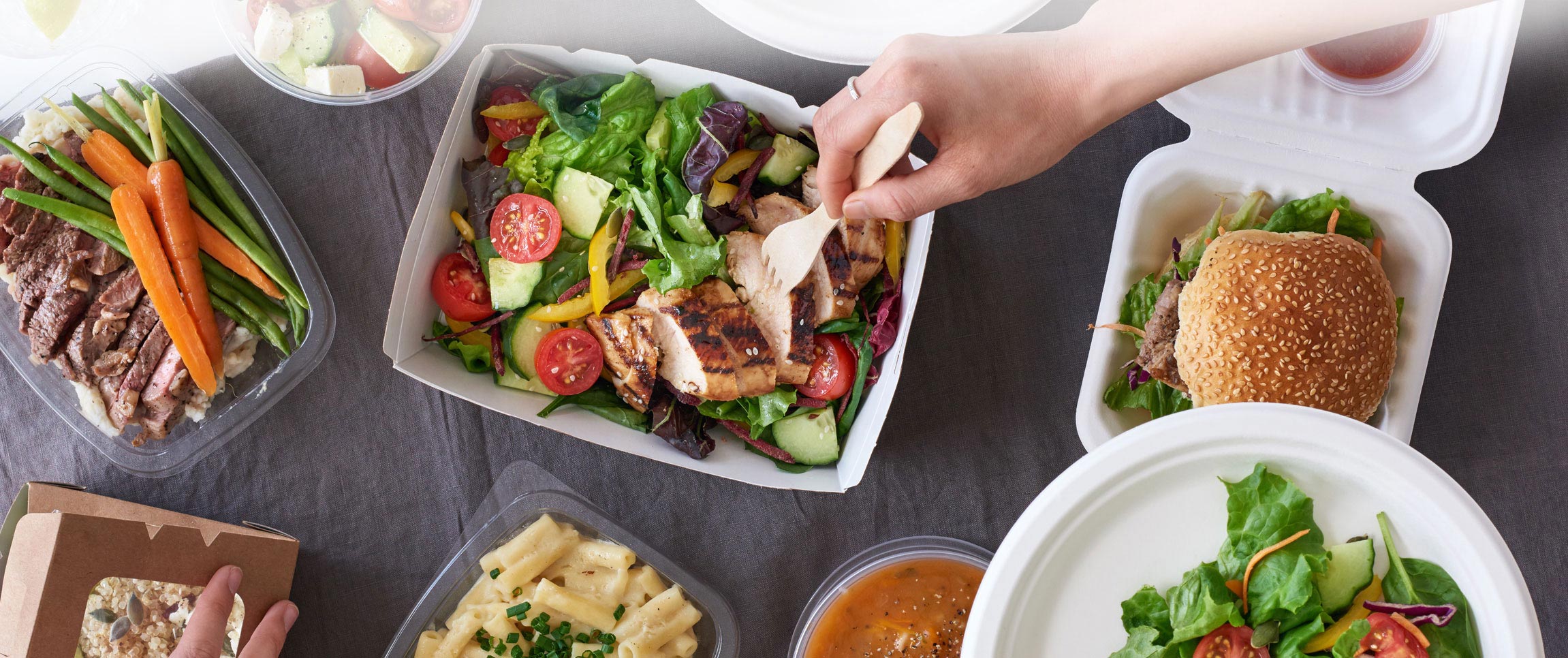Delivery and off-premise options are rapidly growing, thanks in part to younger consumers’ desire for convenience. According to Technomic's recent Takeout & Off-Premise report, 49% of consumers ages 18 to 34 order food to-go more often now than they did three years ago. The report also says that a-quarter of all customers order more food when they order to-go, compared to when they dine in.
As a result, more operators are adding takeout and delivery options to their menus. But like any other part of running a restaurant, it takes some planning to build a successful off-premise strategy. Here are five ways to make sure you’re on the right track.
Craft a Craveable Menu
Enticing diners to order takeout or delivery starts by ensuring that they like the items that are available. Operators should offer the same foods to-go as they do in-house, as long as the quality holds up in transit. If it won't, or to make delivery and takeout a bit more special, it may be a good idea to create custom options only available for off-premise dining.
Technomic’s Takeout & Off-Premise report finds that about a-third of consumers get delivery with friends, so offering takeout-only sampler plates of appetizers can be a big hit. And, if your restaurant offers cocktails or mixed drinks, offer premade mixers, allowing the consumer to add their own alcohol. This helps enhance the delivery or takeout experience, bringing the feel of your restaurant into a customer's home.
Nail Down Your Packaging Strategy
Regardless of whether diners are getting food delivered or picking it up on the way home (or on their lunch hour), it’s critical that it be packaged correctly. Fifty-eight percent of consumers say that when they get food to-go, they wait until they reach their destination to eat it, so that food must taste just as good after traveling. Those who consume takeout at an alternate destination also typically take 10 to 15 minutes to pick up their orders, so the packaging should preserve quality for at least that long.
Soggy fried food, wilted salads or hot food that has cooled off too much can all affect a customer’s satisfaction with their order and reduce their chances of ordering from you again. Make sure that hot and cold foods are packaged separately in insulated containers and that fried foods are placed in vented containers to keep them crispy.
Think Beyond Lunch and Dinner
While a lot of off-premise dining happens at lunch and in the evening, morning is quickly catching up. According to Technomic’s 2017 Breakfast report, 57% of consumers order breakfast from foodservice locations at least once a week, and 45% are looking for portable on-the-go options. This means that offering handheld breakfast items is an area of growing opportunity. And, as for what they want to eat, 40% of consumers say that it’s important for restaurants to have breakfast sandwiches, wraps or burritos on the menu. What’s more, these types of items also marry well with other trends such as ethnic flavors or healthier options, so consider offering breakfast sandwiches that feature globally inspired sauces or better-for-you proteins such as turkey.
Go Mobile, Integrate Tech, Partner Up
The traditional way of ordering delivery or takeout food by calling the restaurant is still the most popular way—for now. Online ordering through a restaurant’s website or mobile app is also growing, but next-gen ordering options, like ordering via text and emojis, chatbots, or social media are coming. All of which makes it hard for operators to keep up.
Many of them turn to technology and use third-party delivery services rather than hiring delivery employees. 31% of takeout customers use these third-party food delivery services at least twice a week, according Mintel’s Online Foodservice Consumer report. So it’s important to have the ability to offer these much-sought-after options. Partnering up with a third-party provider, such as GrubHub or Door Dash, can help operators bridge the gap and boost sales.
Understand What Your Diners Want
Those third-party ordering companies are especially popular among millennial diners. Nearly half say they choose restaurants because they don’t have time to cook at home. While convenience is crucial to those in this demographic, they’re also seeking new and interesting dishes: 40% like going to restaurants that offer innovative flavors.
Chefs and operators can balance diners’ demand for convenience and flavor with turkey. It’s a versatile ingredient that works across the menu and in all kinds of ethnic cuisines. Plus, turkey is lower in fat and calories than its red meat counterparts.
Find recipe inspiration for on-trend dishes that keep guests coming back for more in Butterball® Foodservice's Culinary Center.
Contributed by Butterball Foodservice
Sources:
Technomic Generational Consumer Trend Report, 2016
Butterball Proprietary Consumer Research, 2017



